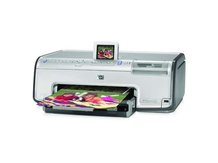Essential tips to cut the cost of printing
We'll show you how to cut down on waste paper, too

The paperless home and office isn't a reality yet. Even the internet hasn't diminished our need for hard copies; in fact, it may have increased the small forest of paper that sits on most desks (how many emails do you print out a week?).
Some people even choose to have two printers in their homes: one for photos and another for all the other little (and large) jobs that need doing. But are printers so commonplace that you hit the 'print' button without a second thought?
In these cash-strapped times, saving resources has become especially important, which means thinking twice about the contents of your IT armoury. A few well-planned cutbacks here could save you a fortune.
Cartridge economy
Probably the single largest ongoing expense with a printer is its ink cartridges. If you're in the fortunate position of buying a new printer, you can opt for colour printers that use separate cartridges, replacing colour(s) as they run out, but there are other methods to consider.
First, there are refillable cartridges. It's a Marmite solution: some swear by the process, others question the quality or are put off by the fiddly nature of the task.
The only way to find out if it really works for you is to try. There are lots of websites offering information and the materials you need to get going. For instance, www.refillinkcartridges.co.uk gives instructions on how to refill cartridges from lots of well-known printer brands.
Sign up for breaking news, reviews, opinion, top tech deals, and more.
Also consider own-branded versus generic cartridges. If refilling doesn't appeal to you, consider ditching own-branded cartridges for generic ones. Again, this is a 'suck it and see' test.
Even if you find generic ones aren't up to scratch for your top-quality prints, you could always try swapping in generic cartridges for everyday tasks.
Finally, ensure you don't replace cartridges until the last minute, as some printer software will tell you it's time to replace your ink cartridge long before that's a reality.
A tip for extending the life of a laser toner cartridge is to give it a little shake when you get the low-ink message. This can help get the toner flowing. Take care when you do this and don't be too vigorous. You just want to free up toner that's stuck in the corners of the cartridge, not shake it apart.
What about paper?
When it comes to photographic paper, printer makers tend to make their own-branded paper, designed to give the best quality output when used in combination with their own-branded inks. But generic brands are often more cost-efficient.
Similarly, it's worth looking out for sales and reductions. For example, a quick check of amazon.co.uk yielded 100 A4 sheets of Canon-branded glossy photo paper reduced from £21.66 to £13.10.
When it comes to ordinary white paper, you don't have to buy top-quality paper to get what you want. A lot of premium-grade paper is marked as 100gsm. This relates to the weight of the paper per square metre. Thicker paper often costs more, but using slightly lighter paper is usually fine. Next time you buy paper, try 80gsm sheets and see if you notice much of a difference other than the extra cash in your wallet.
There's one other great way to save on paper: start a tray for sheets that you've only printed on one side and would otherwise throw away. Next time you need a print of something temporary (an email you'll only need for a while, a test print, or whatever) then use the back of one of the sheets in the tray. That way you'll get twice the use from one sheet.